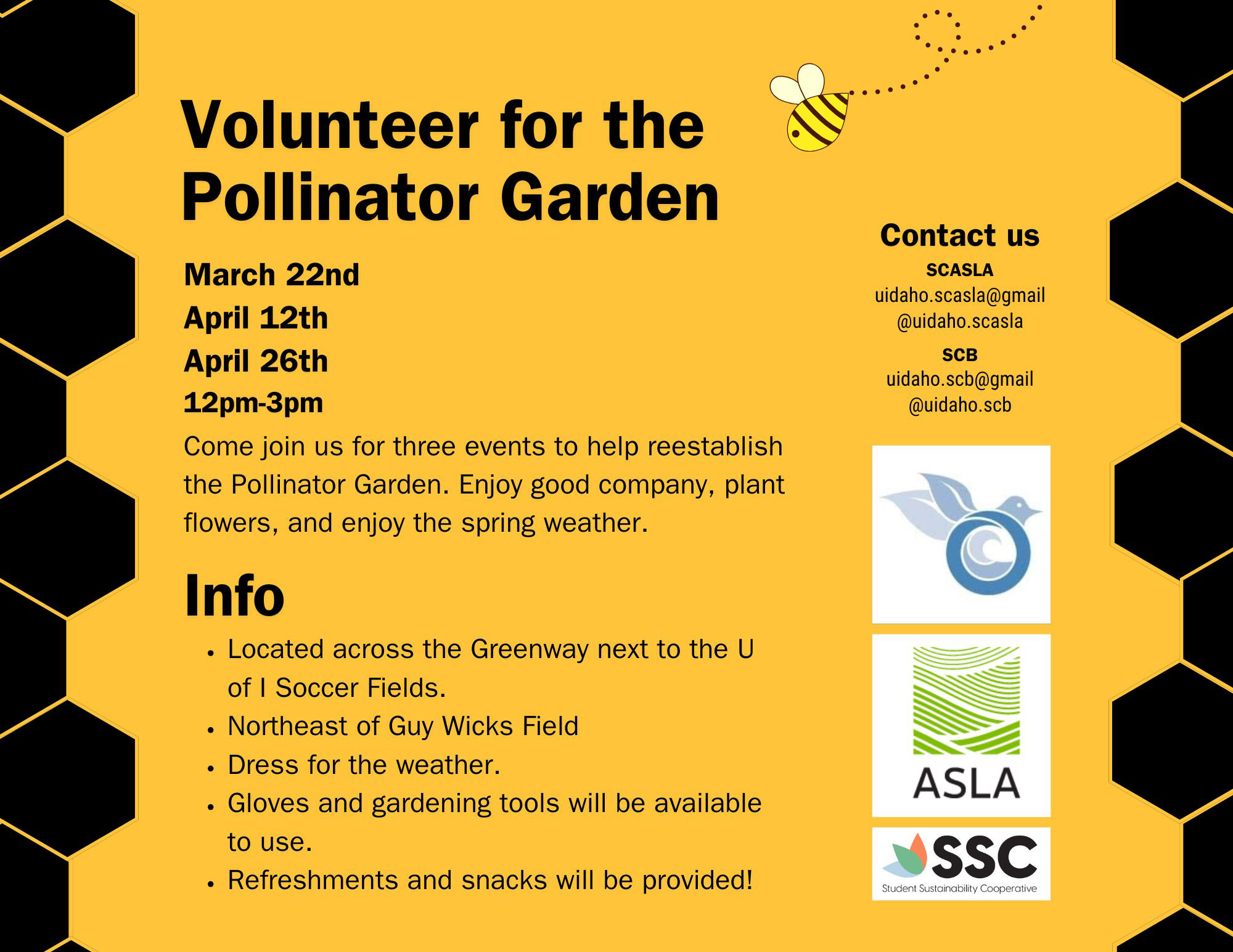Things to do this spring and summer:
1) Help record biodiversity in our region! Do The City Nature Challenge (CNC) 2025 competition date is from April 25-28, 2025 and record the wild organism you see.
See the City Nature Challenge here
2) Wildflower walk with Ronnie this April 6th and throughout the spring and summer. See below for details!
3) Volunteer at the pollinator garden in April! See below.
4) Native plant walks with Pam Brunsfeld in May and June! Learn to ID native plants. See below.
Wildflower Walks with Ronnie
2025 Sunday Lifecycle Walks at Dogwood Creek Wildflower Prairie
Dear Palouse Prairielovers and Prairiekeepers,
Please join this year's wildflower lifecycle walks at Dogwood Creek to follow the stages of growth - from first leaves through flowering and setting seeds - of the 85 Palouse native species on the 50+ acres of prairie and pine forests.
I'm planning 1 or 2 walks each month, the first this coming Sunday, March 30th (sunny 58F), then the next Sunday, April 6th (sunny), another in April if it's not too rainy, then Sunday, May 4th (sunny), and so on .... Or come out anytime; I walk on the hill every day.
Call at (509) two-eight-eight-one-five-one-one. Come by noon for potluck picnic at +1 pm. We'll walk in the afternoon, or in the morning if you come earlier. Bring your friends. And invite others too.
Thanks,
Ronnie
3751 Upper Union Flat Road
Colfax,WA 99111
- a mile downstream from Klemgard Park.
More About 2025 Sunday Lifecycle Walks at
Dogwood Creek Wildflower Prairie
Please come join the walk and picnic this Sunday, April 6th, to follow the lifecycles of Palouse wildflowers on the Magic Prairie at Dogwood Creek Palouse Plant Farm and Preserve.
I’m planning Sunday walks every 2 or 3 weeks to record the stages of growth, flowering and setting of seeds throughout the seasons. Walks are planned for April 20th or 27th, May 11th, and later dates in the May-July peak flowering season, ’til fall. I’ll keep you posted!
First shoots and rosettes of 13 species have already appeared. On February 25th I found the first leaves of elegant rein orchid. By March 1st I’d spotted prairie smoke, cow parsley, elk sedge and Idaho fescue starts. By March 20th, western groundsel, red bessia and arrowleaf balsamroot, Hookers onion, yarrow are were up and already showing flower buds. Grass widows, yellow bells and prairie star are blossoming! As well, most bushes are budding, except for the Hawthorns??? AND we’ve found 20 more since March 20th!!!
I’ll send you a Plant List of the 83 Palouse Natives by April 6th.
Along the deer trails on the 3-acre Magic Prairie we’ll follow the 47 Palouse natives so far identified - we’ll likely find more - with 35 more growing on the 46 unplowed acres. There are many grand views and magical places. We’ll also see the dramatic erosion effects of the February 24th floods along Dogwood Creek.
I’m also hoping you might be able to suggest ideas about how to restore the prairie in future. A few years back Judy Ferguson taught me how to “weed-while-walking”: So you might bring a weeding tool as there are many houndstongue sprouts, etc. to pull or pry out.
Please bring some food for a picnic lunch together about 1pm, and bring your friends and family. Come in the morning if you like. It’s predicted to be 60F and sunny for the April 6th walk!
Ronnie Hatley
(509)-two eight eight - one five one one
Dogwood Creek Palouse Wildflower Farm and Preserve
3751 Upper Union Flat Road, Colfax, WA 99111
- a mile downstream from Klemgard Park

NEW THIS SPRING!!
Informal Plant Walks with Pam
Pam Brunsfeld will be leading informal plant walks for the White Pine Chapter this spring to help people interested in learning to identify native plant species. Informal means that no one will be scouting ahead to make sure certain species will be in peak bloom, and species lists will not be provided. Also, these will not be all day walks. Below is the tentative schedule for Pam’s plant ID walks. Rain will cancel.
Please add these fun and informative walks to your calendar. They are open to members and friends of the chapter.
- May 4 – Afternoon walk on Balsam Route on Moscow Mountain. It is a good area close to Moscow where we can see early spring flora.
- May 13 – Evening walk at Robinson Park.
- May 23 – Afternoon walk in Vassar/Bronson Meadows area to hopefully hit the camas bloom just right.
- June 07 – Afternoon trip to White Pine Campground to see the rare, clustered lady’s slipper, Cypripedium fasciculatum.
More walks may be scheduled depending on interest and flora abundance. Additional details will be sent out via email closer to the time of the walk. Check the whitepine website for details.
